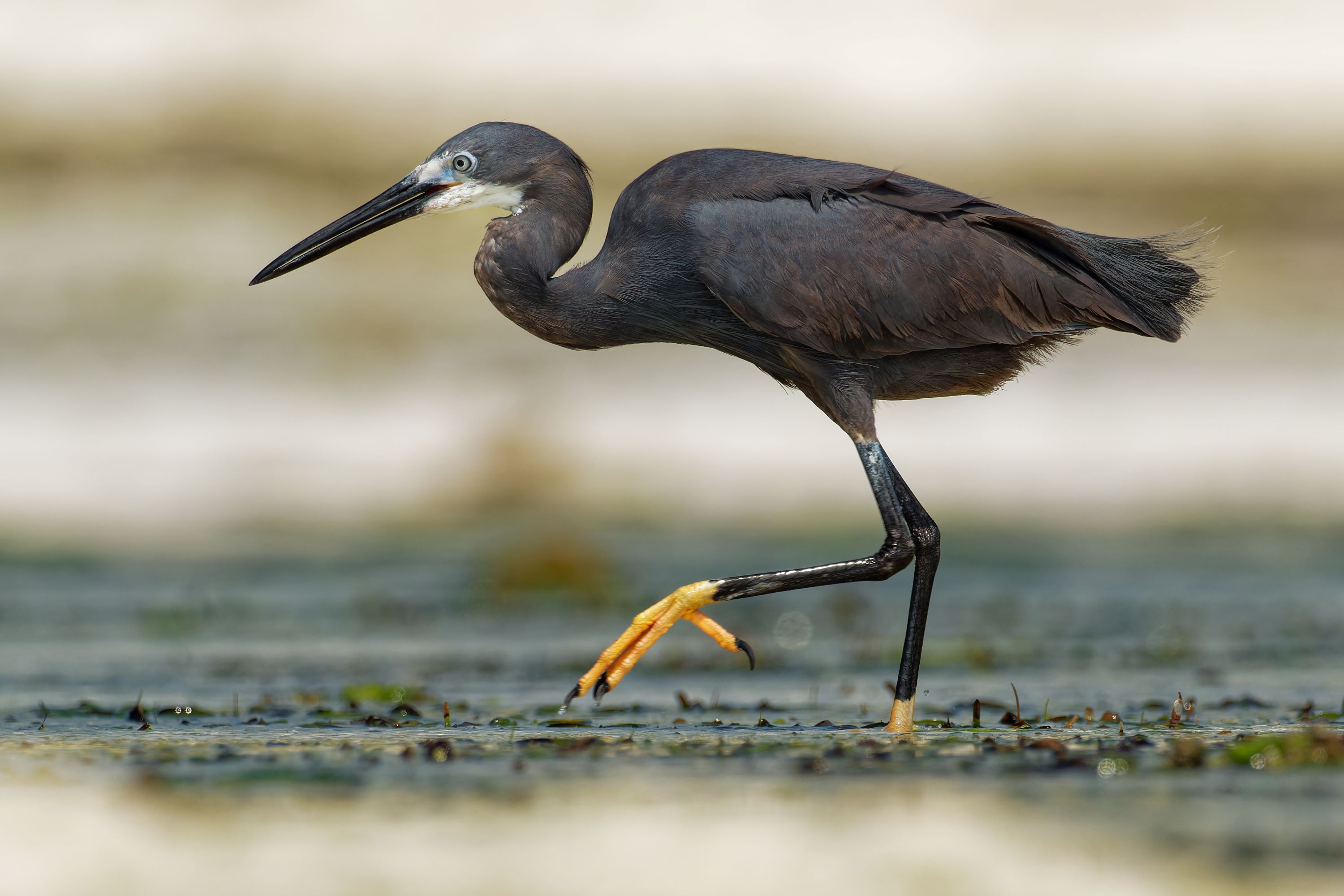
Dimorphic Egret: The Versatile Bird of the Indian Ocean Islands
Introduction to the Dimorphic Egret
The Dimorphic Egret, Egretta dimorpha, is a unique and relatively less-known member of the heron family, Ardeidae. Named for its two distinct color morphs, this egret is a fascinating species that resides primarily in the regions surrounding the Indian Ocean.
Physical Description
Standing at about 55-65 cm in height, the Dimorphic Egret is notable for its two color forms: one predominantly white and the other primarily slate-grey. This dual coloration is unusual among egrets, making it a subject of interest among ornithologists. Both morphs have yellow feet and a black bill, characteristic of many Egretta species.
Habitat and Distribution
This egret inhabits a variety of wetland environments, including marshes, riverbanks, and coastal regions. It is predominantly found on the islands of the western Indian Ocean, including Madagascar, the Comoros, the Seychelles, and the Aldabra Atoll.
Behavior and Lifestyle
The Dimorphic Egret, like many of its relatives, tends to be a solitary bird, especially when foraging. It can often be seen wading in shallow waters, searching for food. This species adapts well to different environments, showcasing its versatility in feeding and living habits.
Feeding Habits
Its diet consists mainly of fish, amphibians, and small aquatic invertebrates. The egret employs typical heron hunting techniques, such as standing still and waiting for prey or slowly stalking its food in shallow water before striking with its sharp bill.
Breeding and Nesting Habits
Breeding habits of the Dimorphic Egret vary based on location and environmental conditions. They generally breed in colonies that may include other egret and heron species. The nests are usually constructed in trees or bushes near water sources.
Egg Laying and Incubation
The female lays 2 to 4 pale blue-green eggs. Both parents are involved in the incubation process, which lasts around 21 to 25 days. The strategic location of their nests helps protect the young from predators.
Chick Rearing and Parental Care
The chicks are born altricial, requiring significant care from the parents. Both parents participate in feeding the chicks through regurgitation, and the young fledge the nest in about 6 to 7 weeks.
Vocalizations and Communication
While generally not a vocal species, the Dimorphic Egret can produce a range of sounds during the breeding season. These sounds are used for communication within the colony and include a variety of croaks and calls.
Conservation Status
The Dimorphic Egret is currently not listed as endangered, but like many island species, it faces threats from habitat loss and environmental changes. Conservation efforts for this egret focus on preserving its wetland habitats.
Similar Species and Taxonomy
Within the Egretta genus, the Dimorphic Egret shares similarities with species like the Little Egret and the Western Reef Heron. Its unique color morphs and island habitat, however, set it apart from these more widespread relatives.
The Dimorphic Egret in Utah
The Dimorphic Egret is not found in Utah or in North America, as its range is limited to certain islands in the Indian Ocean. In Utah, bird enthusiasts can observe other egret species in local wetlands and along waterways.
Conclusion
The Dimorphic Egret, Egretta dimorpha, represents the diverse and adaptive nature of the heron family. Its unique color morphs and specialized island habitats make it an intriguing subject for study and conservation. Preserving the natural habitats of the Dimorphic Egret is crucial for maintaining the biodiversity and ecological balance of the island ecosystems it inhabits.